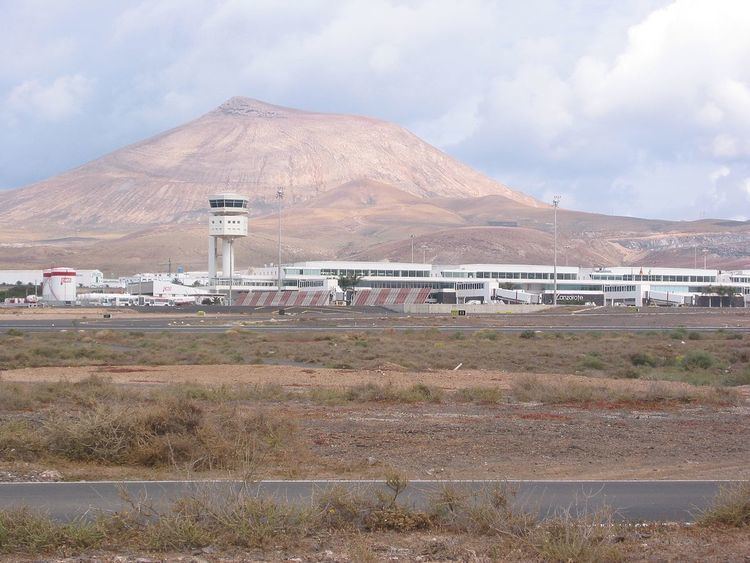Airport type Public Website aena-aeropuertos.es Elevation 14 m Province Province of Las Palmas Passenger count 5,883,039 | Elevation AMSL 14 m / 47 ft 03/21 2,400 Phone +34 902 40 47 04 Yearly aircraft movements 49,575 | |
 | ||
Operator Aeropuertos Españoles y Navegación Aérea (Aena) | ||
Approach landing runway 03 arrecife lanzarote airport ace gcrr
Lanzarote Airport (IATA: ACE, ICAO: GCRR) (Spanish: Aeropuerto de Lanzarote), also known as Arrecife Airport, is the airport serving the island of Lanzarote in the Canary Islands. The airport is located in San Bartolomé, Las Palmas, 5 kilometres (3.1 mi) southwest of the town of Arrecife. It handles flights to many European airports, with hundreds of thousands of tourists each year, as well as internal flights to other Spanish airports. It handled 5,883,039 passengers in 2014.
Contents
- Approach landing runway 03 arrecife lanzarote airport ace gcrr
- Lanzarote airport spotting hd
- Early years
- Development since the 1990s
- References
Lanzarote airport spotting hd
Early years
In the 1930s a need for an aerodrome on the island became evident when connections were required with the other islands and the mainland, as well as a refuelling point for aircraft. Subsequently an airfield was built at Llanos de Guacimeta. The first aircraft to land at the airport was a Junkers Ju 52 EC-DAM on the 24 July 1941. The Spanish Air Force then saw a need for a permanent aerodrome for defence purposes, and this was constructed in Arrecife. In 1946 the airport provisionally accepted civil traffic. Improvements were carried out to the existing facilities, with a runway extension and additional ramp space provided.
A new passenger terminal was constructed along with a control centre, and on 3 March 1970 international and domestic flights began using the airport. A centrepiece of the Gaucimeta terminal was the mural created by Caesar Manrique entitled ‘Lanzarote’.
Development since the 1990s
The growing use of the airport called for the need of improved facilities. DME, ILS and VOR facilities were installed for Runway 03/21 along with additional holding points. New runway lighting and a fire station were also commissioned. In 1999 a new passenger terminal opened (Terminal 1), with a capacity of 6 million passengers per annum. Since then, the original passenger terminal has been revamped and is now used for inter-island flights (Terminal 2).
In 2002, in response to interest from both tourists and local people about the island's aviation heritage, Aena decided to use the Guacimeta passenger terminal as an aviation museum. The museum provides a comprehensive and detailed insight into the history of aviation on the island. There are a number of audio-visual presentations.
